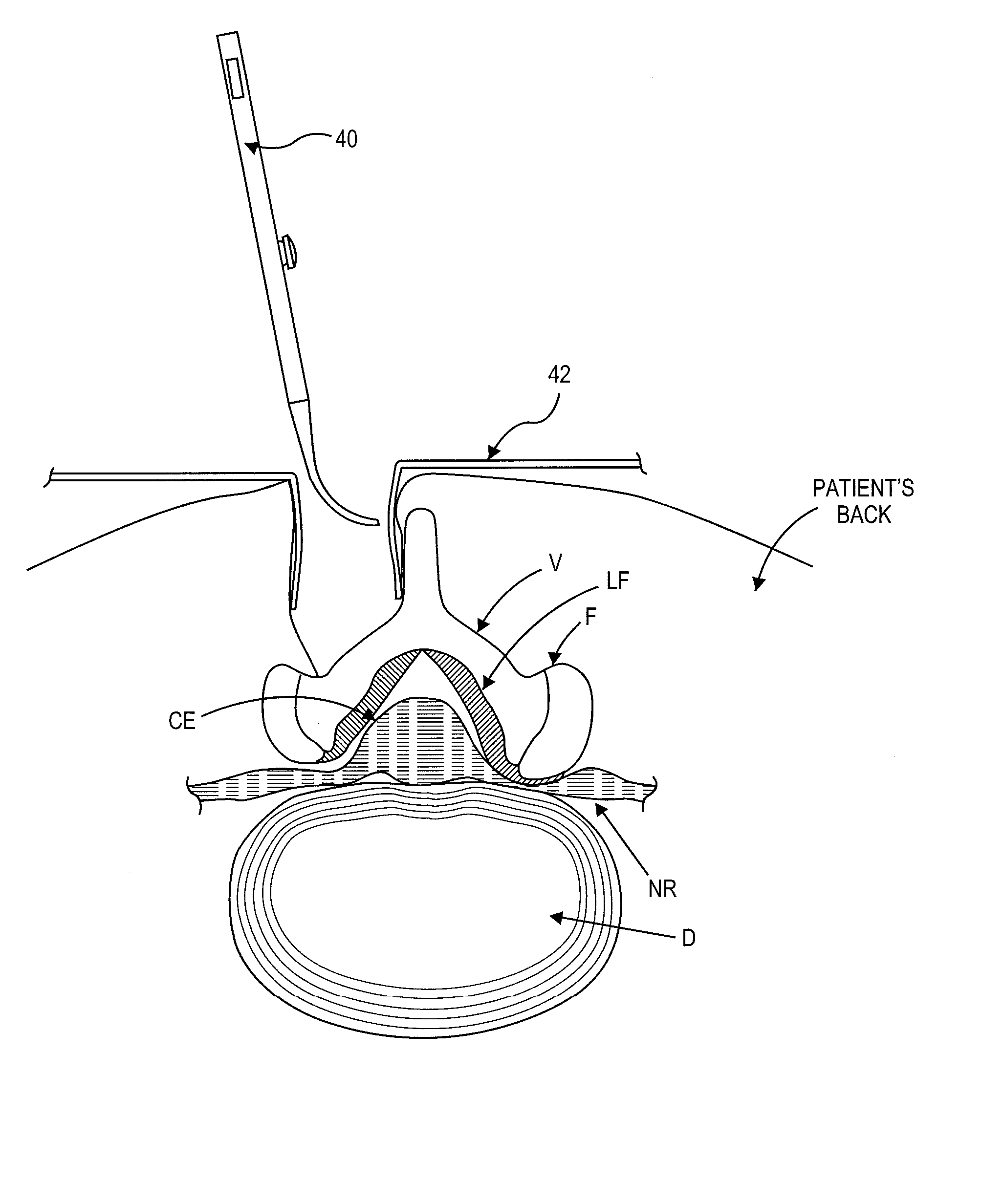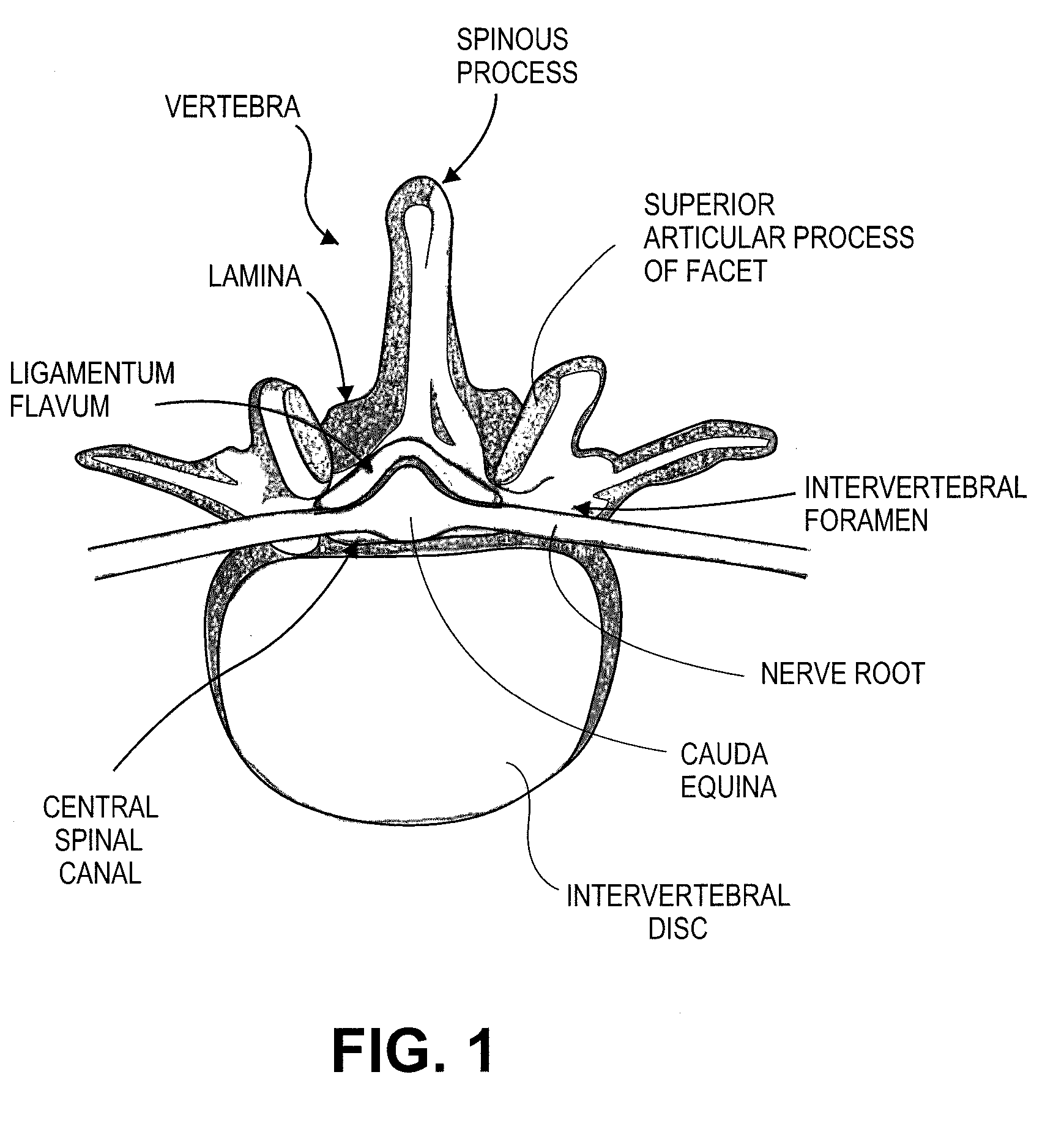Surgical probe and method of making
a surgical and probe technology, applied in the field of surgical probes, can solve the problems of many challenges, reduced or even no direct visualization, and the development of less invasive surgical methods and devices
- Summary
- Abstract
- Description
- Claims
- Application Information
AI Technical Summary
Benefits of technology
Problems solved by technology
Method used
Image
Examples
Embodiment Construction
[0033] Various embodiments of a surgical probe and method for making same are provided. Although the following description and accompanying drawing figures generally focus on use of a probe in the spine, in alternative embodiments, the described probes or variations thereof may be used in any of a number of other anatomical locations in a patient's body.
[0034] Referring to FIG. 4, one embodiment of a guidewire system 10 is shown coupled with a tissue cutting device 11 in position within a patient's spine. Further description of various embodiments of cutting device 11 may be found in U.S. patent application Ser. No. 11 / 461,740, entitled “Multi-Wire Tissue Cutter” (Attorney-Docket No. 026445-000900US), and filed Aug. 1, 2006, the full disclosure of which is hereby incorporated by reference. A number of alternative embodiments of cutting devices, many of which may be used (or adapted for use) with guidewire system 10, are further described in U.S. patent application Ser. Nos.: 11 / 375...
PUM
| Property | Measurement | Unit |
|---|---|---|
| Angle | aaaaa | aaaaa |
| Diameter | aaaaa | aaaaa |
| Flexibility | aaaaa | aaaaa |
Abstract
Description
Claims
Application Information
 Login to View More
Login to View More - R&D
- Intellectual Property
- Life Sciences
- Materials
- Tech Scout
- Unparalleled Data Quality
- Higher Quality Content
- 60% Fewer Hallucinations
Browse by: Latest US Patents, China's latest patents, Technical Efficacy Thesaurus, Application Domain, Technology Topic, Popular Technical Reports.
© 2025 PatSnap. All rights reserved.Legal|Privacy policy|Modern Slavery Act Transparency Statement|Sitemap|About US| Contact US: help@patsnap.com



